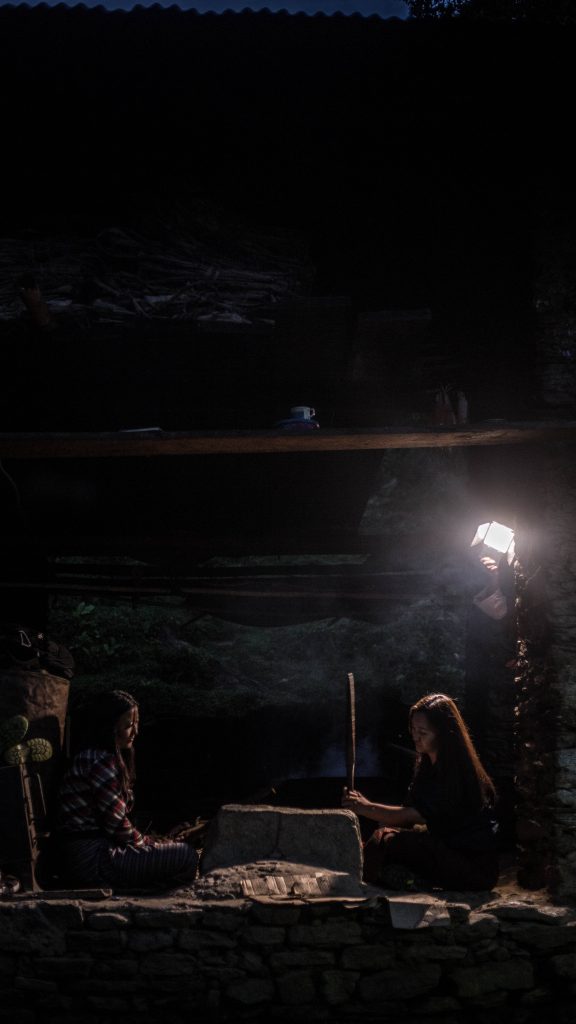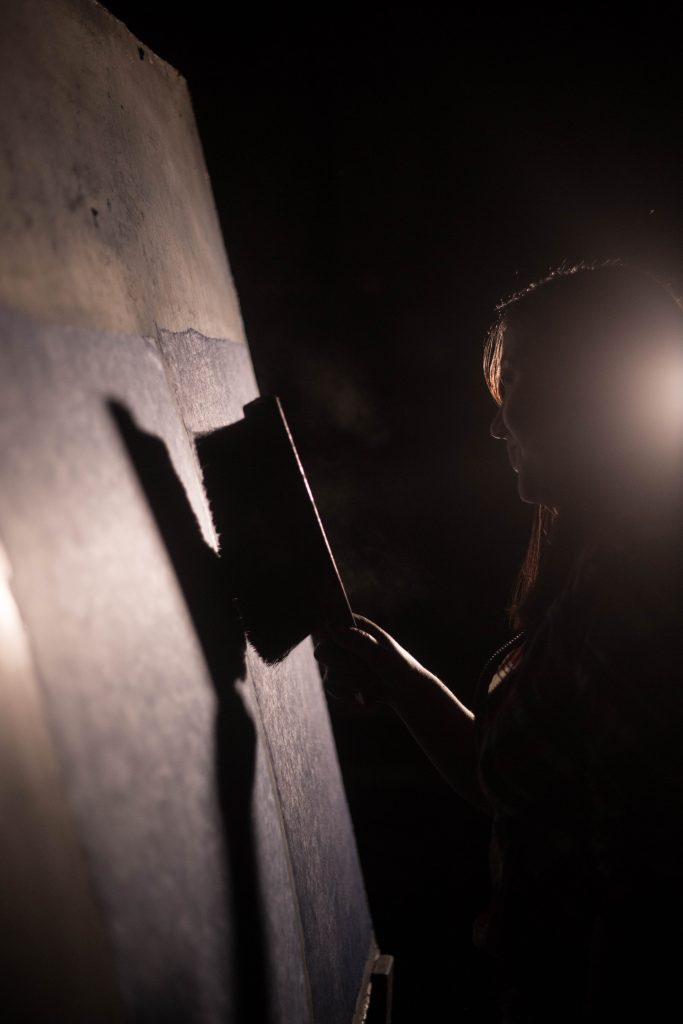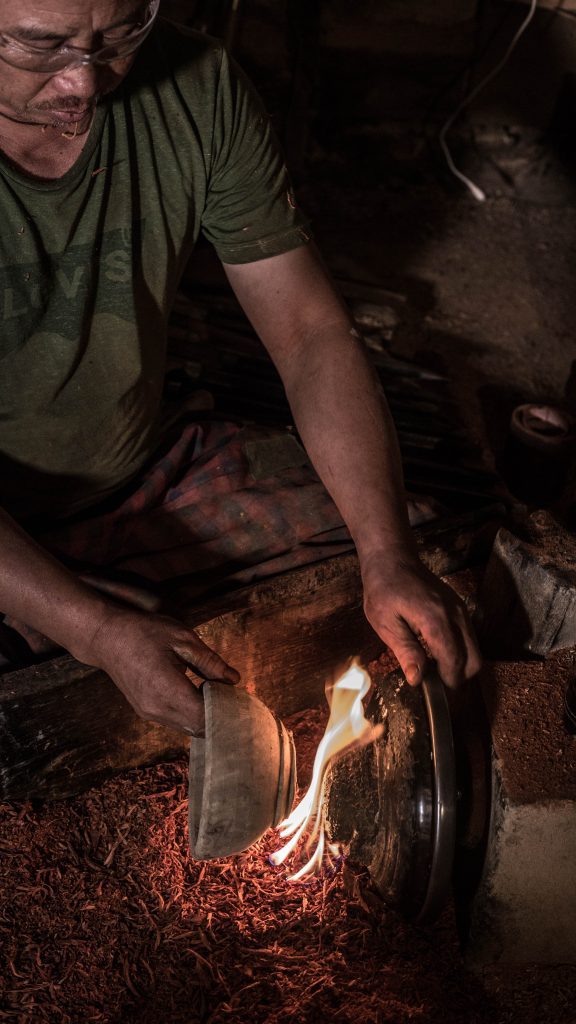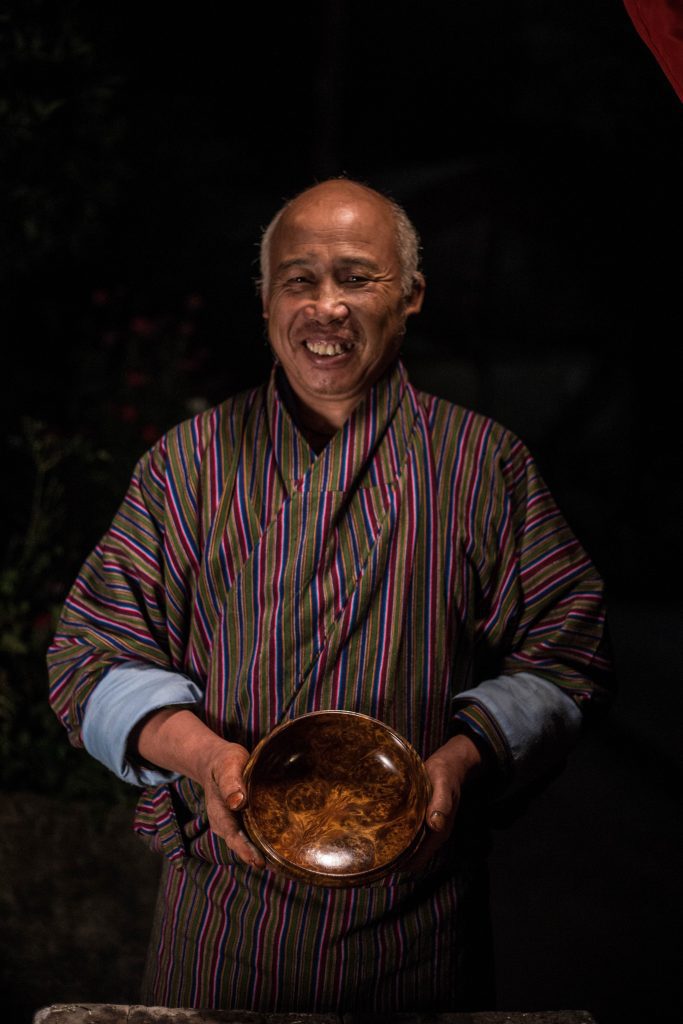
Did you know that Trashiyangtse is the birthplace of some of Bhutan’s most unique arts and crafts? First stop, we headed to Aum Yangdenmo’s most famous small ’Deysho ’ factory in Boomdeling that has been producing this unique natural fiber paper for over 30 years. Right now I’m in Phanteng village under Boomdeling gewog and I am in Aum Yangden’s house. This happens to be one of the households that actually produces the traditional Bhutanese handmade paper also known as Daphne paper. Right after cutting the plants from the forest, we strip the bark off of the plants and have them dried. Around 6 kgs of these dried plants are boiled everyday.

Traditional Desho Paper-making in Boomdeling
Desho paper is originally made from the daphne plant. Which has long fibers that naturally stick together even after grinding them to a pulp. She tells me that it’s difficult to find the Daphne plant in Dzongkhag. So she buys them from villagers who bring them from the far north. In the old days the bark which was boiled in ash water would be transformed into a pulp by pounding them with what looks like a wooden bludgeon. After trying to beat the pulp into a shredded mass, I knew why they switched to a modern grinder. The final pulp is finally separated in the giant mixer and then placed on a bamboo weave. That shapes and evenly distributes the fiber.

To speed up the process Yangden has a big metal heating device that speeds up the heating process without having to rely on sunny days for her paper to dry quickly. As she brushes the sheet of paper, we see a beautiful layer of the small fiber that creates a unique natural design on the deysho.
The Master Shagzopa of Trashiyangtse
Next we were invited to the workshop of a master Shagzopa (wood turner). We meet fifty five year old Ap Palden in his dusty workshop. He’s one of the famous shagzopas of Trashiyangtse. Several piles of wooden bowls lay next to him, as he skillfully smoothens pieces of wood into a bowl using the wood lathe machine.

“My grandfather was the one who had learnt this skill from Tibet. There are different types of Dappas (wood bowls). When we sell, we have the plain ones and patterned (Thrashing). We sell the plain ones for around Nu.700 or 800 for each piece. The ones with the patterns, we sell them for Nu. 1500. There is one called ‘Bou’ which we sell for Nu. 2500 to 3000. The best one is ‘Dza’ wood burl, it is very difficult to get it. Dappas made from wood burl will cost you Nu. 70,000 to 80,000. They sell it for 100,000. I have heard but never bought or sold one for that amount.” says Ap Palden.

“When you first look for wood burls, you will see a swollen outgrowth on a tree but not every outgrowth is a wood burl. We constantly tread into the forest and look for these wood burls. The authentic wood burls are very unique. You can see it from the outer cover. Amateurs will not be able to identify them. They will all look alike in their eyes. People , like us who have been working these will be able to spot the authentic ones. We just know it. So removing all outgrowth trees in the first place is not necessary.”
Zorig Chusum in Trashiyangtse
For a final visit, we went to the very Institute that teaches Bhutanese youth the art of zorig chusum (The 13 traditional Arts and Crafts). One of the main things that Trashiyangtse is known for is the local traditional arts and crafts. I am here at Zorig chusum; the premier institute that has been training Bhutanese youths on honing the Bhutanese arts since 1997.

“It is our responsibility to preserve our traditional arts and crafts. With modernization it’s difficult to preserve. So we are trying our best to do that.” shares the Director of the institute. “We are also trying to modernize some products to make them able to sell in the market. With a total of around 179 students, seven of the 13 arts are taught here. Which include wood carving, embroidery, painting, wood turning and so on. You can visit the Institute and watch the students demonstrate and create these traditional works of art.”

Trashiyangtse took us on a journey of surreal stories. Legends and a look into our cultural history from the unique people, food and destinations. This beautiful district has shown us the magic that allows us to the east. It’s many hidden stories, places, natural landscapes and art history. This is why the Dzongkhag is a must visit. This is why Trashiyangtse is indeed the trove of treasures.
Read more about Trashiyangtse on yeegetaway.com